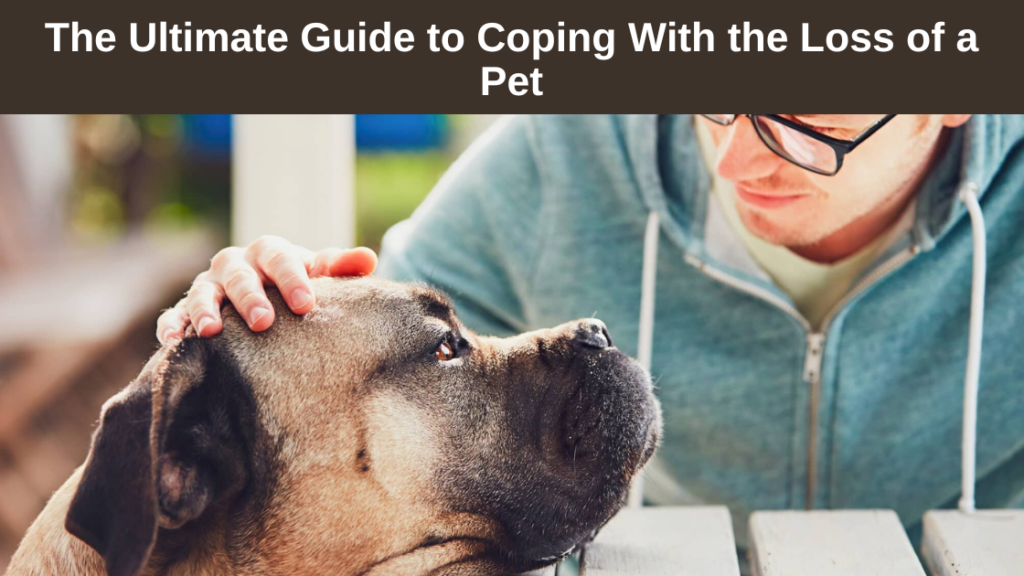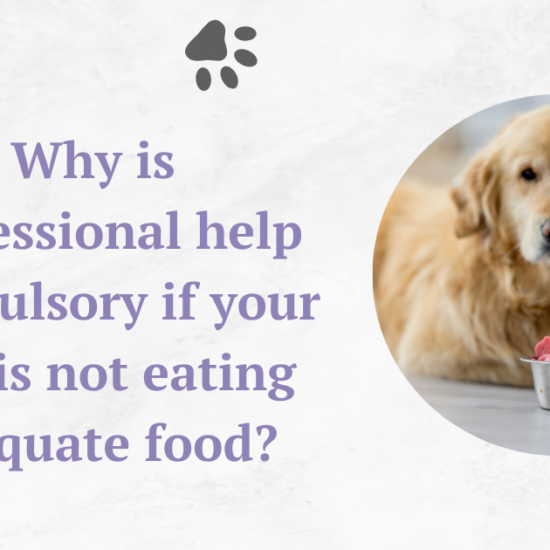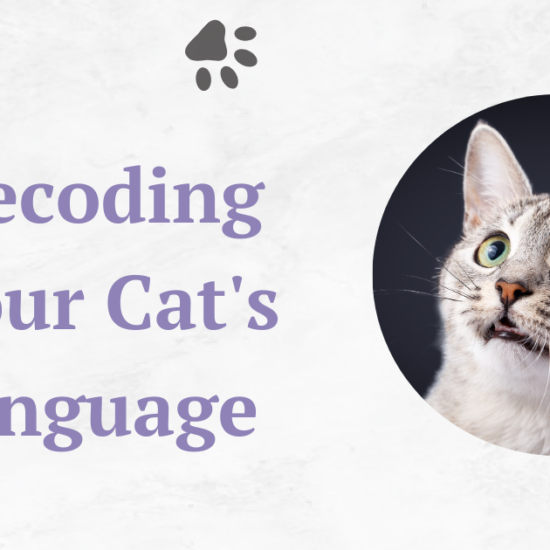People and their pets have a unique and deep relationship. For many people, dogs are more than just animals; they are loved members of the family, friends, and confidants.
Table of Contents
Introduction
We can’t put a price on the happiness and comfort they bring into our lives, which makes coping with the loss of a pet very hard and sad. In this long piece, we’ll talk about the many different parts of pet loss. We’ll talk about how to deal with the loss and how to remember your furry or feathered friend.
Grieving The Loss of a Pet

Grief is a complicated and deeply personal journey that everyone goes through when they lose something. When a loved pet dies, the sadness can be surprisingly strong, sometimes even as strong as the grief that comes with losing a human loved one. To heal from the loss of a pet, it’s important to acknowledge and accept these feelings, knowing that they’re completely normal and a sign of how close we get to our animal friends.
The bond between people and their pets is one of a kind and has many different parts. Pets are more than just animals; they are loved family members, confidants, and sources of pure love and friendship. They give comfort in hard times and share in the happiness and sadness of life. Because of this strong bond, losing a pet is a very difficult and stressful time.
What is Grieving?
Grieving is a complicated set of thoughts, feelings, and actions that people go through when they have lost someone important. When you lose a friend, it’s important to acknowledge your feelings and know that the pain you feel is real and deep. Society may not always understand how hard it is to lose a pet, but your feelings are completely normal.
5 Stages of Grieving The Loss of a Pet

Elisabeth Kubler-Ross, a therapist, came up with the idea of the stages of grief, which can help you better understand and move through the grieving process.
These steps can help you understand the mental roller coaster that comes with a loss:
Stage 1: Denial
Most of the time, the first stage of loss is disbelief or denial. It might be hard to get used to the idea that your beloved pet is no longer with you. This stage can feel like numbness or shock. This is a way for the mind to protect itself from feeling the full weight of the pet loss.
During this time, you might keep waiting for your pet to walk through the door, hear their familiar bark or meow, or even feel their presence next to you. Denial is a normal response that gives you a short break from the reality while coping with the loss of a pet.
Stage 2: Anger
Once the original shock of being told “no” wears off, anger can take over. You might be angry at yourself, your pet, fate, or even people who have nothing to do with the problem. This anger comes from the deep sense of unfairness and powerlessness that often comes with a loss.
It’s important to remember that anger is a normal part of coping with the loss of a pet. Getting it out in a healthy way can help you work through your feelings and move toward healing.
Stage 3: ‘What If” Stage
Grief can make you think “what if” and make you want to make a deal. During this time, you might wonder if there was something else you could have done to prevent the loss. People often play back situations in their minds, looking for ways to turn back time and change the story.
During this time, the person tries to get back in charge of the situation. As the finality of the loss slowly sinks in, this can be a hard and mentally draining time.
Stage 4: Depression
Sadness and depression are normal during the grieving process, and they can be very strong. You may feel like the weight of your loss is too much to bear, which can make you lose your hunger, have trouble sleeping, and feel like your life is empty all the time.
It’s important to recognize these feelings and let yourself feel them fully. Depression can make it take longer to get better, so it’s important to get help from friends, family, or experts during this time.
Stage 5: Acceptance
Acceptance is the last step of grieving the loss of a pet, and it starts to happen over time. It’s important to keep in mind that acceptance doesn’t always mean happiness or peace. Instead, it means that you are slowly coming to terms with the fact that your pet is no longer physically with you and that you must go on with your life without them.
Acceptance lets you keep the memories and love you had for your pet with you, which can help you find a new balance in your life. It shows how strong you are and how well you can deal with the changes that loss has brought into your life.
Grief isn’t a Simple Process
It’s important to realize that the steps of grief are not a straight line and don’t fit everyone the same way. Grief is a very personal experience, and people can go through these stages at their own pace or come back to them more than once. Also, not everyone goes through every stage, and people’s feelings can be very different in how strong they are.
Grief is a complex process that is hard to predict and changes over time. You may find yourself going back and forth between different feelings, such as anger one minute and deep sadness the next. This mental upheaval is very normal and shows how complicated the healing process is.
In short, coping with the loss of a pet is a very personal journey. It’s important to notice and accept your feelings, know the stages of grief, and understand that healing is not a simple process. You can get through this hard time and honor the memory of your beloved pet if you give yourself time and space to cry and ask for help when you need it.
9 Ways of Coping With the Loss of a Pet

Losing a pet is a deep and heartbreaking experience that can leave pet owners with a wide range of feelings. The bond between people and their pets is a very important part of our lives. Pet loss is one of the hardest phases of life. Coping with the loss of a pet is a very personal journey. There is no one-size-fits-all solution, but there are ways to get through this hard time. Let’s explore them.
- Give Yourself Time to Mourn
Grief is a normal reaction to loss, and it’s important to let yourself feel sad. Trying to hide or ignore your feelings can make it harder to get better. The first step in getting over the loss of a pet is to recognize how sad you are. Understand that there is no time limit on grief and that it’s okay to feel many different feelings, even ones that seem to go against each other.
It’s normal to feel very sad, guilty, angry, and confused when you lose a pet. It’s also normal for people to question whether or not your grief is real, especially if they don’t fully understand how close you were to your pet. It is important to remember that your feelings are real and should be taken seriously.
- Ask for Help
You don’t have to go through grief on your own. Get in touch with friends and family who know how important your pet is to you. Sharing your thoughts with people you care about can be especially comforting because they can understand how you feel and listen with understanding. Don’t be afraid to talk about your pet, tell stories about him or her, and talk about the good times you had with him or her.
Friends and family can be helpful, but it can also be helpful to talk to people who have lost a pet before. They can understand what you’re going through in a way that no one else can. Online platforms and social media groups for people who have lost pets can help you find people who have been through similar things.
- Join Help Groups for Pet Loss
Join an in-person or online support group for people who have lost a pet. These specialized groups give you a safe place to talk about your grief, learn from others’ experiences, and find other helpful ways to deal with the loss of a pet. Being a part of a support group can help you feel less alone and more like you fit during this hard time.
Pet loss support groups give you the chance to talk about your pet and hear about others’ pets. Hearing how other people have dealt with similar situations can help you feel better and give you important information about your own healing journey.
- Seek Help from Professionals
Sometimes, the sadness that comes with losing a pet can be too much or last too long. In these situations, it can be very helpful to talk to a therapist or counselor who has a lot of experience with grief and loss. These experts can help you find the right tools and ways to deal with your problems.
Grief therapists are trained to help people deal with the many different feelings that come with loss. They can give you a safe place where you won’t be judged to talk about your feelings and work through the emotional problems that come with losing a pet.
Sadness therapists and pet loss counselors are trained to help people deal with sadness, especially when it comes to the unique experience of losing a pet. During this hard time, these workers can help in a special way.
Grief therapists and pet loss counselors can both help, but pet loss counselors often have more training and experience in dealing with the unique issues that come with losing a pet. They can give advice and ideas that are specific to pet loss.
- Make a Monument
Remembering your pet can bring you comfort and help you remember the good times you had together. Putting together a memorial can be a healing and important way to remember a pet you loved. Think about the following:
Photo Album or Scrapbook: Put together a photo album or scrapbook with pictures and other things that remind you of your pet. You can keep a record of your pet’s life, from when he or she was a baby or kitten to when he or she was old.
Set aside a special place in your home or yard where you can put pictures, your pet’s favorite toys, or a memorial plaque. This place can help you feel better by reminding you that they are still there.
Plant a Memorial Tree or Garden: Planting a tree, flowers, or a garden in your pet’s honor can be a healing and long-lasting way to honor them. It shows how much you love them and how beautiful their memory will always be.
Donate in Their Name: Give money to an animal charity or rescue group in the name of your pet. Helping a cause that was important to your pet can be a great way to remember them.
- Compose a Letter
Writing a letter to your pet can be a good way to get things off your chest and show your love, thanks, and feelings. This can be done in secret, so you don’t have to worry about being judged or stopped. You could also read the letter out loud at a memorial event or give it to family and friends who also cared about your pet.
Writing a letter can help you work through your feelings and explain how much you care about your pet. It gives you a chance to say things you might not have been able to while your pet was still alive.
- Write a diary
Keeping a grief record can be helpful and teach you things. Write about what you think, feel, and remember about your pet every day. Over time, this journal can be a helpful record of your journey to healing. It can show you how your sadness changes and how you find peace bit by bit.
When you look back at your journal writings, you can see how far you’ve come on your journey through grief. It can help you figure out why you feel the way you do and give you a sense of success as you heal.
- Self Care
Taking care of your physical and mental health is important when you’re going through grief. Grief can be hard on your health, so it’s important to put yourself first. Make sure you get enough sleep, eat right, and exercise regularly. Do things that make you happy and calm down, like reading, taking walks, or working on a hobby you love.
Self-Care is a healing tool. Taking care of yourself is not selfish; it’s an important part of getting better. By taking care of your own health, you can handle the difficult mental terrain of grief better.
- Think About Getting a New Pet
Some people find comfort in getting a new pet when they feel ready, even if it seems too soon. It can be scary to think about getting a new pet, and it’s important to remember that a new pet can never replace the one you lost. But a new friend or partner can bring you new happiness and company.
Choosing when to get a new pet is a very personal decision. Some people might feel ready right away after a loss, while others might need more time to get better. When making this choice, you should think about your emotional state and the wants of a new pet.
8 Brilliant Ways of Honoring Your Beloved Pet’s Memory

The relationship between people and their pets is special and loved. Pets become a big part of our lives because they give us company, unconditional love, and a lot of happiness. When we lose a pet we love, it can break our hearts, but it’s also a chance to enjoy their life and the love we shared with them. Here are some important ways to remember your beloved pet and pay tribute to them:
- Plan a Funeral or Memorial Service
A memorial event or get-together is a heartfelt way to honor the life of your pet. This event can help you say goodbye to your pet friend and give you a chance to talk about the good times you had with them. Here are some things to think about if you want a special memorial service for your pet:
- Invite family and friends who knew and cared about your pet. For an online meeting, you can send paper invitations or make a digital invitation.
- Pick a place that’s important to you and your pet, like your backyard, a nearby park, or even your own house. If your pet had a favorite place, that might be a good place to hold the memorial.
- Ask people to share their best memories, stories, or poems about your pet. This can be a healing and moving way to remember your pet’s unique personality and how much happiness they brought into your lives.
- The service can include symbolic acts like lighting candles, letting go of balloons, or making a memory plaque. These things are like visual memorials to your pet.
- Use Art to Show Love
Art can catch the essence and spirit of your pet, making a beautiful tribute to them that will last for a long time. Here are some creative ways you can pay tribute to your pet:
- Pet Portraits: Getting a professional picture of your furry friend can be a sweet way to remember him or her. Artists are skilled at capturing your pet’s likeness, attitude, and spirit in a work of art that will last forever.
- Sculptures: If you want a three-dimensional memorial, you could have a statue of your pet made. You can put these custom-made pieces in your home or yard as a physical reminder of your beloved friend.
- DIY Art: If you like making art yourself, you could make a memory piece for your pet. Painting, drawing, or making sculptures can be calming and give you a way to show how you feel about your pet.
- Provide for Animal Charity
Donating to a pet charity or animal rescue group in the name of your pet is a great way to remember them and help a cause that was important to them. This kind act can help other animals in need and be a permanent tribute to your beloved pet.
Choose a charity whose goals match those of your pet or whose cause speaks to you. Whether you give to a group that helps animals, saves them, or does medical research, you can make a difference.
When you make the contribution, say that it is in memory of your pet. Many organizations will say thank you and may give you a certificate or letter of thanks to remember your good deed.
- Plant a Garden as a Memorial
Making a memorial yard for your pet can be a healing and long-lasting way to remember them. This live memorial is not only a beautiful way to remember someone, but it also lets you connect with nature and find comfort in its beauty. Here’s what to do first:
Choose a Location: Find a good spot for your memory garden in your yard or a nearby park. Think about the size and shape of the area and how it can best be used to honor your pet.
Choose Plants: Choose flowers, bushes, or trees that mean something to both you and your pet. Your pet may have had a favorite place in the yard or liked to sit under a certain tree. Planting these things can help you remember them in a special way.
Add personal touches to the garden, like a memory stone or plaque with your pet’s name and a message from the heart. You can also add things that remind you of your pet, like wind chimes or trinkets.
Maintain and Care: Spend time taking care of your memory garden, making sure the plants are healthy and the area is clean. Taking care of your home can be a good way to remember your pet and find comfort in nature.
- Make a Book of Memories
A memory book or scrapbook is a personal and physical way to hold on to the memories you have of your pet. It lets you put together photos, notes, and other things that tell the story of your pet’s life. Here’s how to make a book with special memories:
Collect things that remind you of your pet: photos, letters, paw prints, and anything else. You can also write down thoughts, stories, or tales.
Design and Layout: Choose a design and layout that fits your pet’s attitude and the memories you want to keep. Depending on what you like, you can make a digital or real scrapbook.
Organizing: Organize the information in a way that tells the story of your pet’s life from the time they were born to the time they died, either by time or by theme. Add captions or descriptions to give the pictures and keepsakes a sense of place and meaning.
Creativity: You can be creative with your memory book if you want to. Add pictures, quotes, or songs that show how you feel about your pet and what you’ve done with it.
Share and Think: Once your memory book is done, spend some time going through the pages and thinking about the best times you had with your pet. Share it with your family and friends who also loved your pet.
Note: There might be affiliate links mentioned here. We may receive a commission if you purchase a product through an affiliate link. There is no additional charge for you. Please do your own research before making any online purchases.
- Help Out Others and Foster
If your pet loved animals and had a kind heart, helping out at an animal shelter or offering to take care of animals in need can be a great way to remember them. Here are some ways you can make a difference:
Volunteering: Volunteering at an animal rescue is a great way to help take care of animals waiting to be adopted and get to know them. Your kindness and time can make a big difference in these animals’ lives.
Foster Care: Giving animals in need a brief home and the love and care they need is called “foster care.” It’s a great way to keep your pet’s memory of kindness and compassion alive.
Help and support: Help pet owners who are having trouble with their pet’ health or behavior. Sharing your knowledge and experiences can help other people deal with problems and make the relationship between people and animals stronger.
- Wear a Memorial Jewelry
There are pieces of jewelry, like pendants, bangles, and rings, that can hold a small amount of ashes or a lock of fur from your pet. You can keep your pet’s memory close to your heart and feel comforted by their presence when you wear these legacy pieces.
Choose a piece of jewelry that fits your style and that of your pet. You can add your pet’s name or a special message to some choices. If you want your memorial jewelry to stay a treasured keepsake, you should take good care of it. It should be cleaned often and put away in a safe place when it’s not being worn.
When people ask about your tribute jewelry, it gives you a chance to talk about your beloved pet and tell stories about them. It can also lead to talks about losing a pet and how important it is to remember our animal friends.
- Make a Digital Gravestone
In the digital age we live in now, making a digital memorial for your pet is an important way to stay in touch with friends and family and keep their legacy alive. Here’s how to make an online memorial:
Social Media Page: Make a social media page or group for your pet where you can share pictures, stories, and memories. Invite family and friends to join in and share their own memories.
Online Memorial Website: Create an easy website or blog to honor the memory of your pet. Include a biography, a photo gallery, and a place for visitors to share their own stories and opinions.
Video Montage: Make a video montage of your pet’s life with music and touching comments. Share the movie on sites like YouTube or Vimeo so that family and friends can watch it and remember it.
Digital Collage: Use design software or apps to put together a digital collage of pictures and memories of your pet. Share the image on social media or use it as the background on your computer or phone.
Honoring the memory of your pet is a very personal and caring thing to do. Whether you hold a memorial service, donate to a good cause, or wear a piece of memorial jewelry, all of these things are beautiful ways to remember the love, joy, and company your pet gave you. Each tribute shows how strong the bond is between people and their favorite pets, making sure that their memory will live on in your heart and in the hearts of everyone who loved them.
5 Ways of Helping Children in Coping With the Loss of a Pet

Children can feel very sad and have trouble coping with the loss of a pet. For many kids, it could be their first experience with death, and it can be hard to understand and deal with something like that. Parents and other adults are very important in helping children get through this hard time. Here are some things you can do to help kids get over the loss of a pet:
- Be Honest and Use Language That’s Right for The Age Group
Helping children understand and deal with the death of a pet starts with being honest. When talking to kids about what’s going on, it’s important to use words that are right for their age. When talking about the pet’s death, don’t use euphemisms like “gone to sleep” or “ran away” because they can cause misunderstanding and fear.
Explain things in a way that’s right for the child’s age and level of understanding. Younger children may need explanations that are easier to understand, while bigger children may be able to understand more complicated ideas. Use words like “died” or “passed away” to softly say what really happened.
Answer their questions honestly and encourage them to ask what happened and why. Answer their questions honestly and in a way that makes sense for their age. Tell them it’s okay to be curious and talk about how they feel.
Stress the natural cycle of life. Tell them that death is a normal part of life and that all living things will die at some point. Use this to teach kids about how life goes in cycles and how important it is to enjoy the time we have with our loved ones, including our pets.
- Encourage Them to Talk About How They Feel
When a pet dies, children may feel a lot of different things, from sadness and anger to confusion and guilt. It’s important to give them a safe place to talk about these thoughts. Here are some ways to get them to talk:
Artistic Expression: Children can use art as a strong way to show how they feel. Give them art materials and encourage them to draw pictures of their pet, make a scrapbook, or write a letter.
Talking: Encourage children to talk about their pets and how they feel about them. Listen carefully and tell them you understand how they feel. Avoid ignoring or downplaying their pain, as this can make them feel alone.
Having a Journal: For older kids, having a journal can be a helpful way to work through their feelings. Give them a diary and tell them to write about how they feel and what they remember about their pet.
Shared Stories: Tell stories about your own experiences with the pet and encourage other family members to do the same. This can be comforting and help them remember that their pet will always have a special place in their hearts.
- Make a Monument
Creating a memorial for the pet with the help of children can be an important and healing experience. It gives them a chance to take part in remembering their pet. Here are some ways that children can help make a memorial:
Artistic Memorials: Tell kids to make art to remember their pet. They can draw, paint, or make projects that show how they feel and what they remember.
Letters and Notes: Have kids write letters or notes to their pets to show how much they love, appreciate, and remember them. You can put these letters in a special memory box or put them on a monument.
Small Service: If you want to help kids say goodbye to their pet, you could hold a small service with them. Some ways to do this are to light a candle, put a flower in memory of the pet, or read a poem.
Memory Box: Make a box where kids can put things that remind them of the pet, like a collar, a favorite toy, or a picture of the pet. This box can be a physical memory of how much their pet meant to them.
- Give Reassurance and Comfort
During the grief process, children might feel sad, scared, and lonely, among other things. It’s important for parents and other caregivers to calm and reassure their children. Here’s how you can help:
Physical Comfort: If your child wants physical support, hug, hold, or cuddle with them. Touch can give you a sense of security and comfort.
Active Listening: Give your child your full attention when they want to talk about their pet or share how they feel. Don’t talk over them or give them answers right away. Sometimes all they need is someone to listen and understand.
Validate Their Feelings: Let them know it’s okay to be sad, angry, or unsure. Tell them that what they’re feeling is normal and that you’re there to help.
Order and Stability: Make sure your child’s daily life has a sense of order and stability. During times of change, consistency can give you a sense of safety.
Remembering the Pet: As we’ve already talked about, help your child make a lasting memory for their pet. This physical tribute can help them feel better and give you a sense of peace.
- Have Patience and an Open Mind
Grief can look different in children than it does in adults, and their mental journey may have ups and downs. During this process, it’s important to be patient and kind. Here are some things to think about:
Respect Their Pace: Know that children may feel different things at different times. They may have times of deep sadness followed by times when everything seems normal. This is perfectly fine.
Respect Their Unique Ways: Know that children of different ages may react to the loss of a pet in different ways. Younger kids might have more questions, while bigger kids might understand the idea of death better.
Grief that Comes Back: Be ready for your child to feel sad again, especially on important dates like the pet’s birthday or the anniversary of the day they died. Give them your love and understanding.
Seek Professional Help: If your child’s grief is overwhelming or lasts for a long time, you might want to talk to a child therapist or psychologist who has experience with grief and loss. They can give your child specialized help and methods that are made to fit his or her needs.
FAQs
How do I get over the death of a pet I loved?
Getting over the loss of a pet is a very personal process. Let yourself feel sad and accept how you feel. Get help from friends and family who know how important your pet is to you. If you need to, you could join a grief support group or talk to a grief counselor. Making a monument for your pet is another way to remember them.
Is it normal to feel a lot of grief and guilt after a pet dies?
Yes, it’s totally normal to feel very sad and guilty when you lose a pet. We love our pets very much, and losing one can make us feel very sad. Your thoughts and feelings are real, and they should be taken seriously.
How can I make a monument for my pet that means something?
A photo album or scrapbook, a memorial space in your home or garden, planting a memorial tree or garden, donating to a pet charity in your pet’s name, writing a letter to your pet, or keeping a journal of your memories are all ways to make a meaningful tribute.
When should you think about getting a new pet after you’ve lost one?
When you decide to get a new pet is a very personal decision. Some people might feel ready right away after a loss, while others might need more time to get better. When making this choice, you should think about your emotional state and the wants of a new pet.
How can I help my child get over the death of a pet?
When helping a child deal with the loss of a pet, it’s important to be honest and use words that are right for their age. Encourage them to show how they feel through art, talking, writing in a notebook, or telling stories. It’s also important to make a memorial with them, give them peace and reassurance, and be patient and understanding.
How do I explain death to a child when one of their pets dies?
Tell a kid about death using words that are right for their age. Avoid euphemisms and use words like “died” or “passed away.” Stress that death is a natural part of life and that all living things die.
What if my kid doesn’t want to talk about how sad it is that the pet died?
It’s okay if kids don’t always want to talk about how they feel. Give them the room and time they need to figure out how they feel. Be ready to listen to them when they want to talk.
How can I help my child make something to remember their pet?
Encourage your child to make things like drawings, paintings, or projects as memorials. They can also write letters or notes to their pet, have a small ritual, or make a memory box with things like a collar or a favorite toy.
Should I think about getting help from a professional for my child’s grief?
If your child’s sadness gets too big or lasts too long, it might help to talk to a child therapist or counselor who knows how to deal with grief and loss. They can give your child specialized help and methods that are made to fit his or her needs.
How can I help my child through big days like the birthday of the pet or the anniversary of the day they died?
On these times, you should be ready for your child to feel sad again. Give them your support and understanding, and think about doing things that will help them remember and enjoy the life of their pet.
Conclusion
Losing a pet is a very sad and hard thing to go through, but it’s also a chance to remember all the love and joy that animal brought into your life. Accepting your grief, getting help, and finding ways to remember your pet’s memory are all ways to deal with the loss of a pet. Whether you make a memorial, help out at an animal shelter, or just think about the good times you had together, remember that healing takes time and it’s okay to grieve in your own way. In the end, your pet’s memory will live on in your heart. This is a sign of how strong the bond is between people and their loving animal companions.












